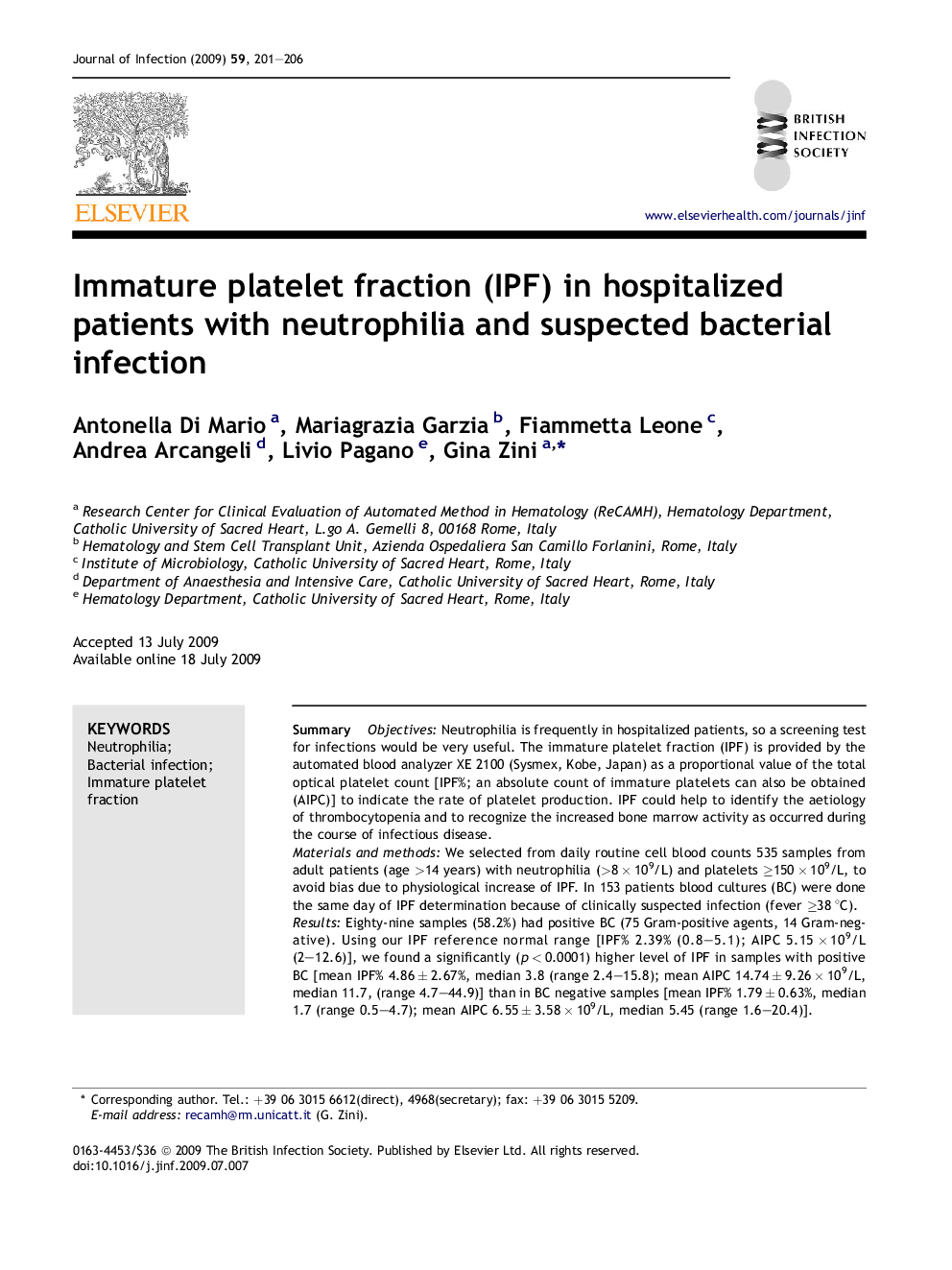| کد مقاله | کد نشریه | سال انتشار | مقاله انگلیسی | نسخه تمام متن |
|---|---|---|---|---|
| 3375247 | 1219666 | 2009 | 6 صفحه PDF | دانلود رایگان |

SummaryObjectivesNeutrophilia is frequently in hospitalized patients, so a screening test for infections would be very useful. The immature platelet fraction (IPF) is provided by the automated blood analyzer XE 2100 (Sysmex, Kobe, Japan) as a proportional value of the total optical platelet count [IPF%; an absolute count of immature platelets can also be obtained (AIPC)] to indicate the rate of platelet production. IPF could help to identify the aetiology of thrombocytopenia and to recognize the increased bone marrow activity as occurred during the course of infectious disease.Materials and methodsWe selected from daily routine cell blood counts 535 samples from adult patients (age >14 years) with neutrophilia (>8 × 109/L) and platelets ≥150 × 109/L, to avoid bias due to physiological increase of IPF. In 153 patients blood cultures (BC) were done the same day of IPF determination because of clinically suspected infection (fever ≥38 °C).ResultsEighty-nine samples (58.2%) had positive BC (75 Gram-positive agents, 14 Gram-negative). Using our IPF reference normal range [IPF% 2.39% (0.8–5.1); AIPC 5.15 × 109/L (2–12.6)], we found a significantly (p < 0.0001) higher level of IPF in samples with positive BC [mean IPF% 4.86 ± 2.67%, median 3.8 (range 2.4–15.8); mean AIPC 14.74 ± 9.26 × 109/L, median 11.7, (range 4.7–44.9)] than in BC negative samples [mean IPF% 1.79 ± 0.63%, median 1.7 (range 0.5–4.7); mean AIPC 6.55 ± 3.58 × 109/L, median 5.45 (range 1.6–20.4)].ConclusionsThe increased IPF shows a statistically significant correlation with BC positivity. This parameter could therefore be used in the daily laboratory routine in patients with neutrophilia as a low cost screening test for bacterial infection.
Journal: Journal of Infection - Volume 59, Issue 3, September 2009, Pages 201–206